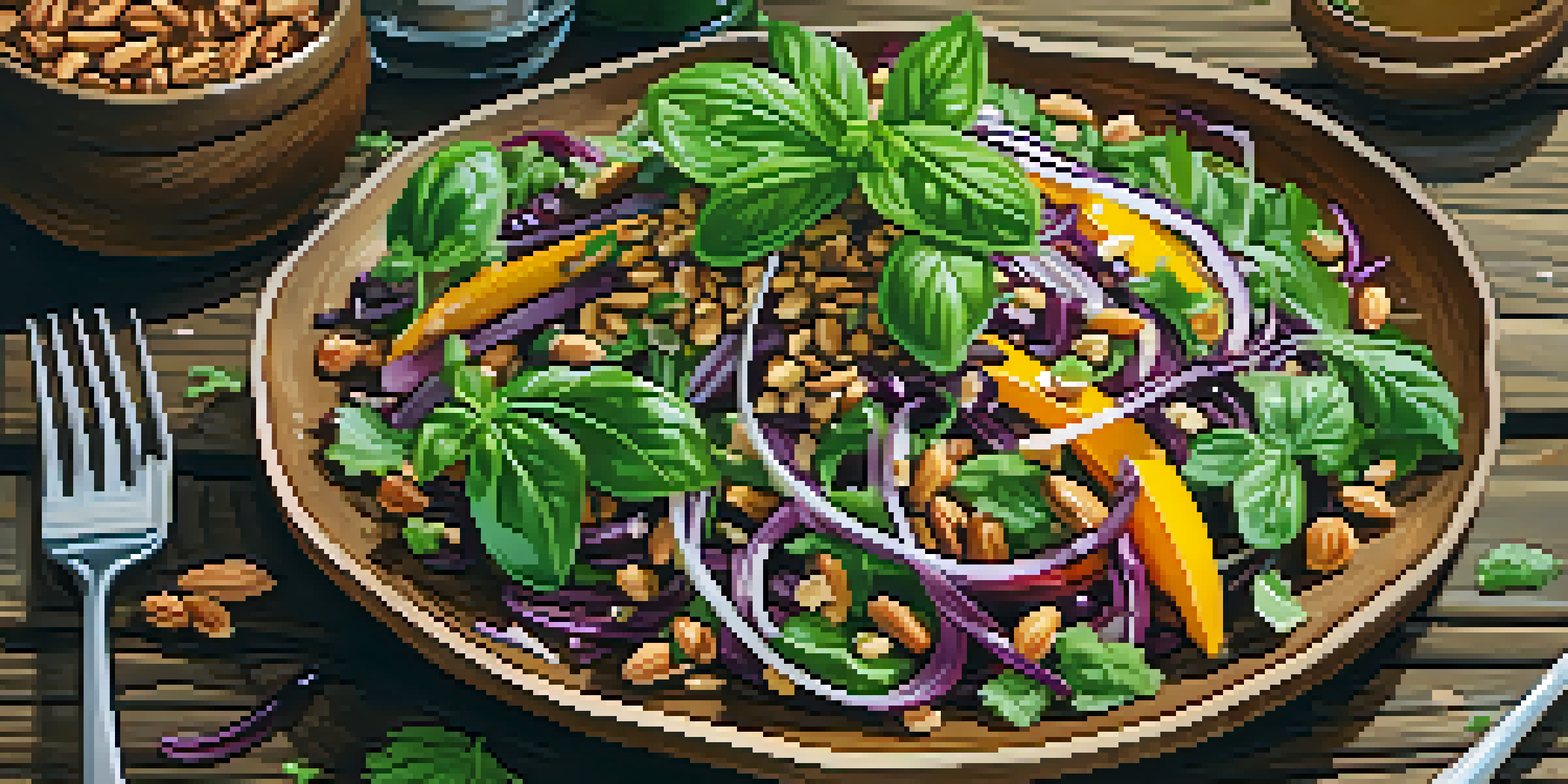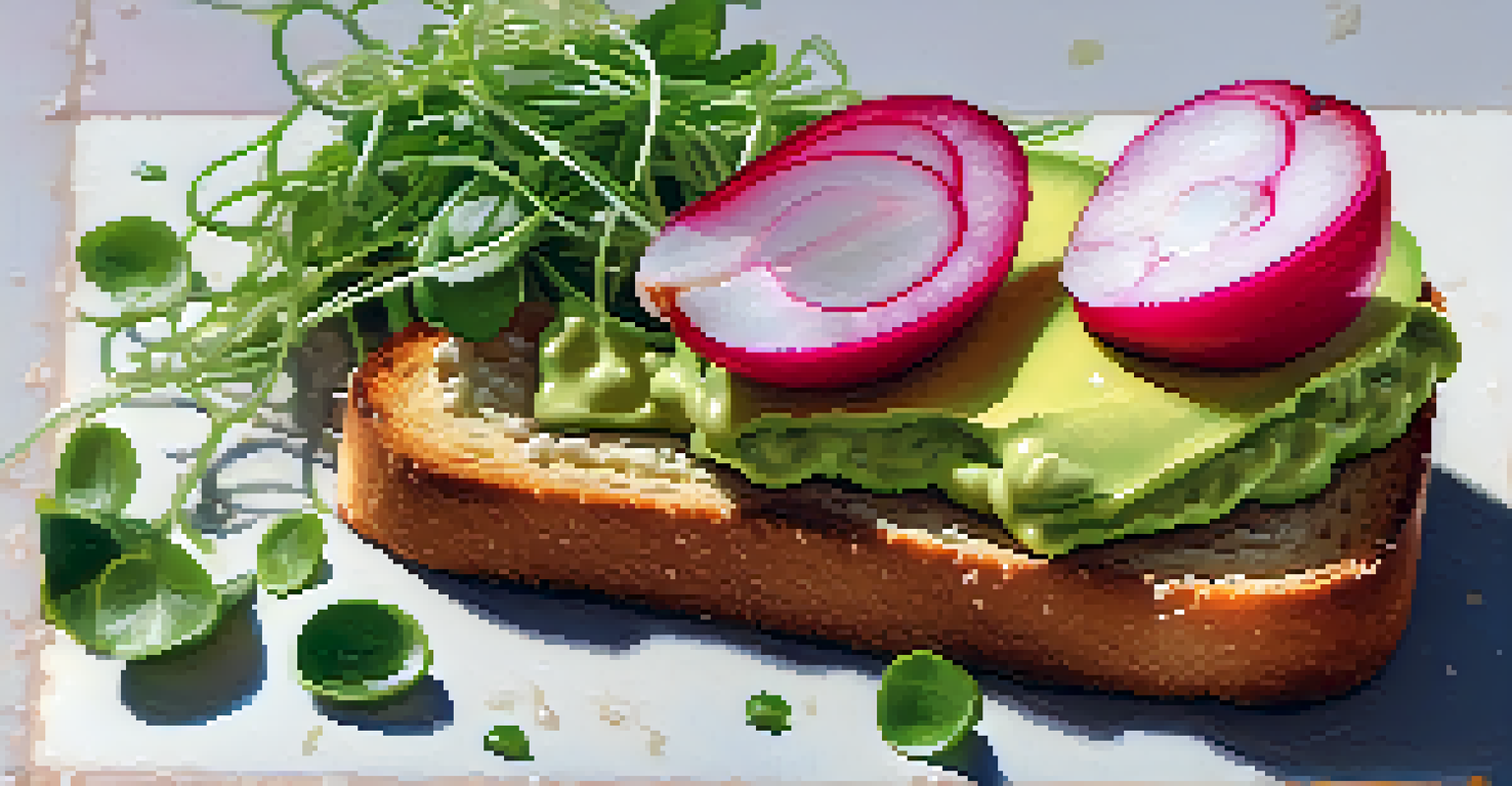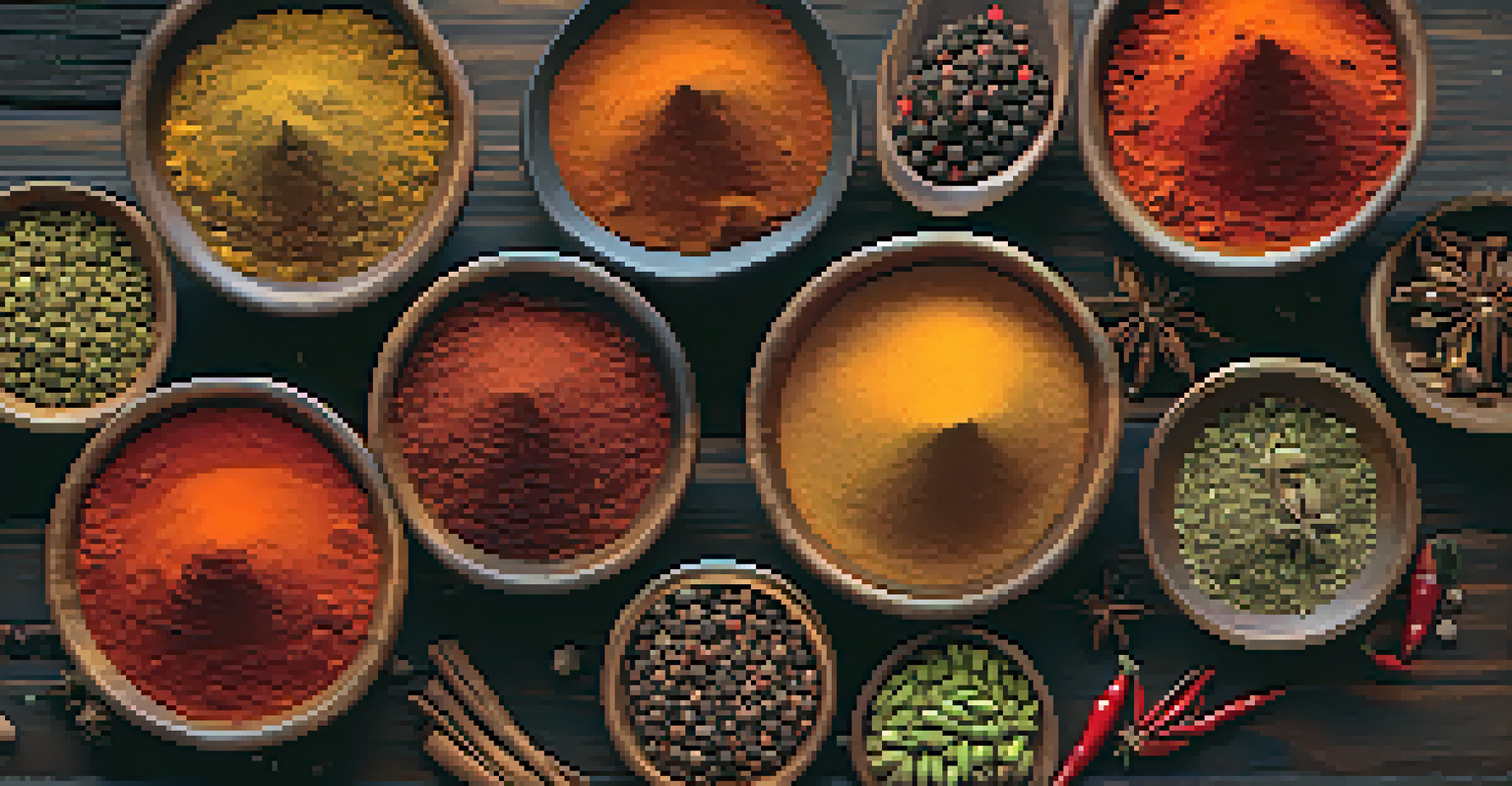Exploring Vegan Food: Key Flavor Profiles to Enhance Dishes

Understanding the Basics of Vegan Flavor Profiles
Vegan cuisine is often misunderstood as bland or boring, but that's far from the truth. The key lies in understanding flavor profiles, which are essentially the building blocks of taste. By combining various flavors, you can create dishes that are not only delicious but also satisfying and nourishing.
Cooking is like love. It should be entered into with abandon or not at all.
Think of flavor profiles as a palette for a painter. Just as artists mix colors to create stunning visuals, chefs blend flavors to achieve culinary masterpieces. Familiarizing yourself with these profiles can transform your approach to cooking and help you craft meals that leave a lasting impression.
In this exploration, we’ll delve into the essential flavors that can elevate vegan dishes, ensuring that every bite is packed with excitement and depth. So, let’s embark on this flavorful journey together!
Herbs: The Freshness Factor in Vegan Dishes
Herbs are like the sunshine of the culinary world; they brighten up any dish with their fresh and vibrant notes. From the peppery kick of arugula to the aromatic allure of basil, herbs can add layers of flavor that elevate your meals. Incorporating herbs into your vegan cooking doesn't just enhance taste; it also adds a burst of color.

Using fresh herbs can significantly change the nature of a dish. For instance, adding cilantro to a bean salad can introduce a refreshing contrast that makes the dish pop. On the other hand, dried herbs, while slightly less potent, still offer convenience and depth, especially in slow-cooked meals.
Flavor Profiles Transform Vegan Cooking
Understanding and combining various flavor profiles can elevate vegan dishes from bland to extraordinary.
Experimenting with different combinations of herbs can lead to delightful discoveries. So don't hesitate to sprinkle in a handful here and there, and watch your vegan dishes come to life!
Spices: The Secret to Depth and Complexity
Spices are the backbone of flavor in many cuisines, and they hold the secret to achieving depth and complexity in vegan dishes. Whether you’re using smoky paprika or aromatic cumin, spices can transform a simple meal into something extraordinary. They invite warmth and richness that can often be missing in plant-based cooking.
The secret of success in the kitchen is to use the best ingredients and to treat them with respect.
Consider how a dash of cayenne can add heat to a creamy coconut curry, or how cinnamon can elevate a sweet potato mash. By balancing spices thoughtfully, you can create dishes that are not only flavorful but also memorable, inviting your guests to ask for seconds.
Don’t be afraid to experiment with spices! Start with small amounts, taste as you go, and adjust accordingly. The world of spices is vast, and each variety can open a new avenue of flavor exploration.
Umami: The Savory Flavor That Makes Vegan Dishes Shine
Umami, often referred to as the 'fifth taste,' is what gives food a savory richness that can be particularly beneficial in vegan cooking. Ingredients like mushrooms, tomatoes, and nutritional yeast are packed with umami, providing that depth of flavor that makes dishes satisfying. Embracing umami can help bridge the gap between vegan meals and traditional fare.
For example, adding sautéed shiitake mushrooms to a stir-fry not only introduces a meaty texture but also infuses the dish with a deep, savory note. Similarly, a sprinkle of nutritional yeast can impart a cheesy flavor to pasta or popcorn, making it a perfect topping for those craving comfort food.
Herbs and Spices Enhance Taste
Incorporating fresh herbs and spices adds depth and excitement to vegan meals, creating a vibrant dining experience.
In essence, harnessing umami can elevate your vegan dishes, making them feel indulgent and hearty. So, keep an eye out for these umami-rich ingredients to ensure every meal is full of flavor.
Acidity: Brightening Up Vegan Flavors
Acidity is a crucial component in cooking that can brighten and elevate dishes, especially in vegan cuisine. Ingredients like lemon juice, vinegar, and tomatoes add a tangy punch that cuts through richness and balances flavors. Just a splash of acidity can transform a dull dish into something vibrant and exciting.
Think about how a drizzle of balsamic vinegar can enhance a roasted vegetable medley or how a squeeze of lime can elevate a tropical fruit salad. The contrast between the acidity and other flavors creates a harmonious balance that pleases the palate.
So, don't shy away from adding a bit of acidity to your meals. It’s often the finishing touch that brings everything together, leaving your diners with a memorable experience.
Textures: Adding Interest to Vegan Dishes
While flavor is essential, texture plays a pivotal role in creating enjoyable vegan dishes. The contrast between crunchy, creamy, and chewy elements can make a meal far more engaging. For instance, pairing a creamy avocado spread with crispy toast provides a delightful experience for the senses.
Incorporating a variety of textures not only enhances the eating experience but also makes dishes more visually appealing. Consider adding nuts or seeds for a crunchy element to a salad or introducing soft tofu into a stir-fry for a delightful contrast.
Balance is Key with Acidity and Sweetness
Using acidity and sweetness effectively can harmonize flavors in vegan dishes, making each bite memorable.
By being mindful of texture, you can elevate your vegan cooking to new heights. It's all about creating a balance that keeps your diners intrigued and satisfied.
Sweetness: Balancing Flavors in Vegan Cuisine
Sweetness can often be an overlooked flavor in savory vegan dishes, but it plays a vital role in balancing out other tastes. Ingredients like maple syrup, agave nectar, or even fruits can provide a subtle sweetness that complements the savory notes in your dish. This balance can create a more rounded flavor profile and enhance the overall eating experience.
For example, a hint of maple syrup in a balsamic vinaigrette can elevate a simple salad, while roasted vegetables drizzled with a bit of honey or agave can bring forth their natural sweetness. This approach allows for a delightful contrast that keeps the palate engaged.

Don't hesitate to experiment with sweetness in your cooking. Finding that perfect balance can transform a dish from ordinary to extraordinary, making your meals truly memorable.
Combining Flavor Profiles for Culinary Success
The magic of vegan cooking lies in the ability to combine various flavor profiles to create harmonious dishes. By understanding how different flavors interact, you can design meals that are complex and satisfying. For instance, a dish that balances acidity from lemon juice with the richness of tahini creates a delightful contrast that dances on the palate.
When combining flavors, think about how they complement or contrast with one another. For example, pairing spicy and sweet can create a delightful tension, while blending umami with acidity can enhance overall richness. The possibilities are endless when you start playing with these profiles.
So, unleash your creativity in the kitchen! By thoughtfully combining flavor profiles, you can craft dishes that not only taste amazing but also tell a story, inviting your guests to savor each bite.